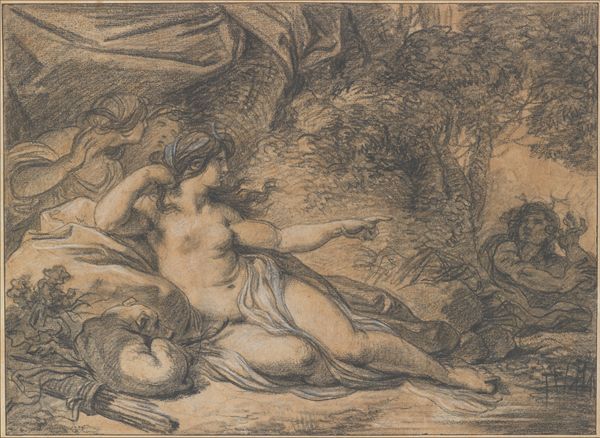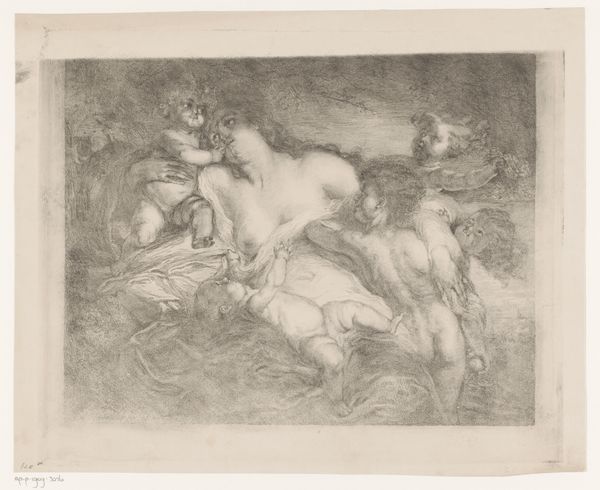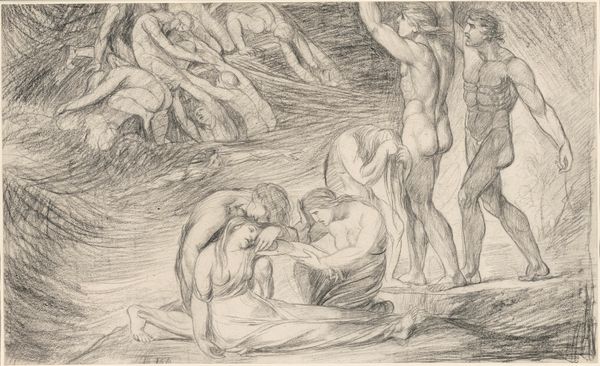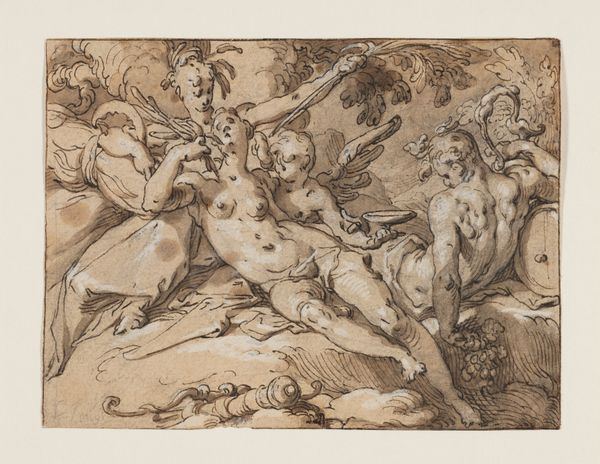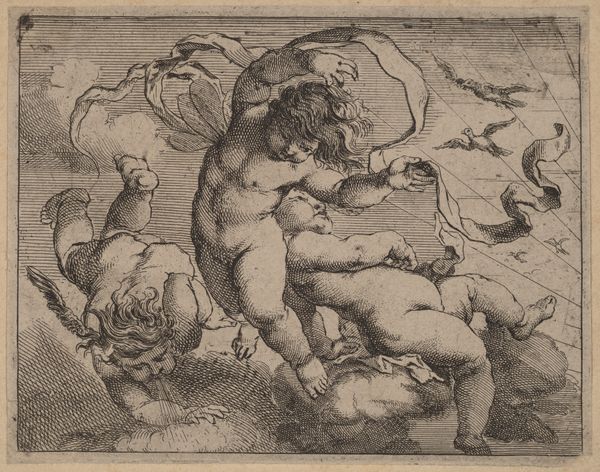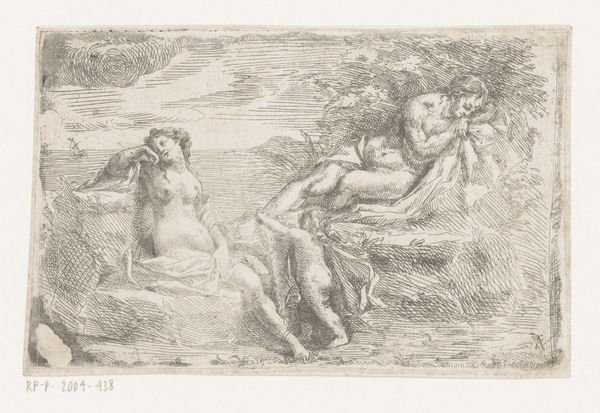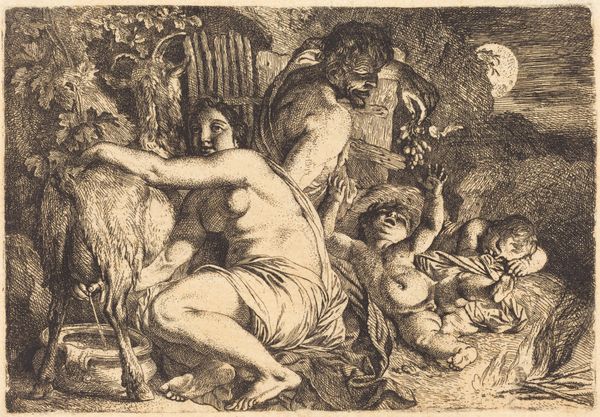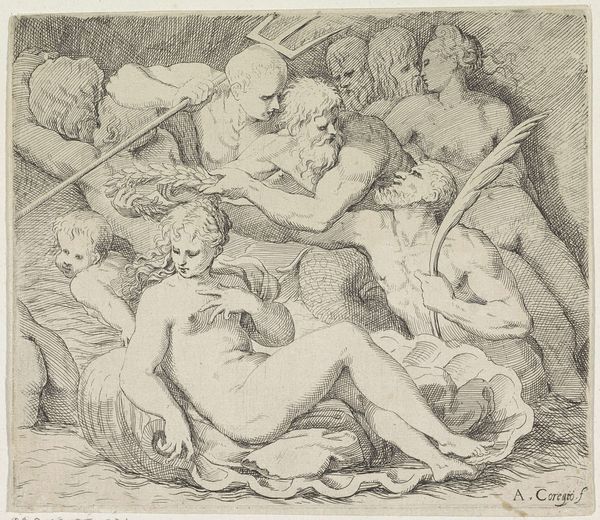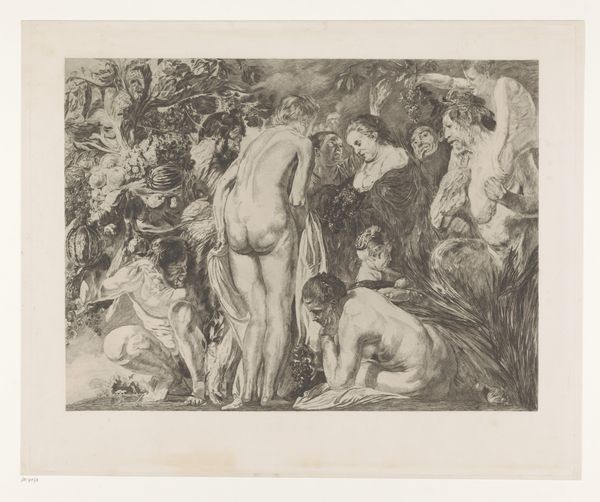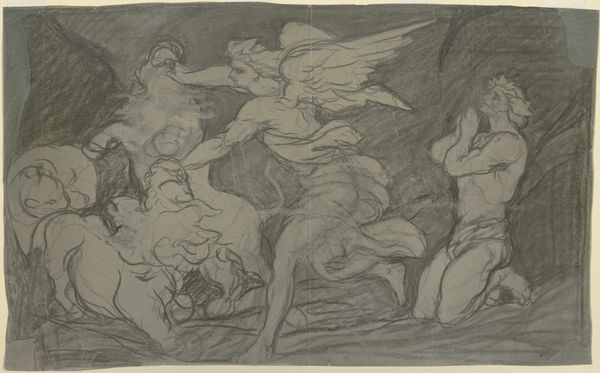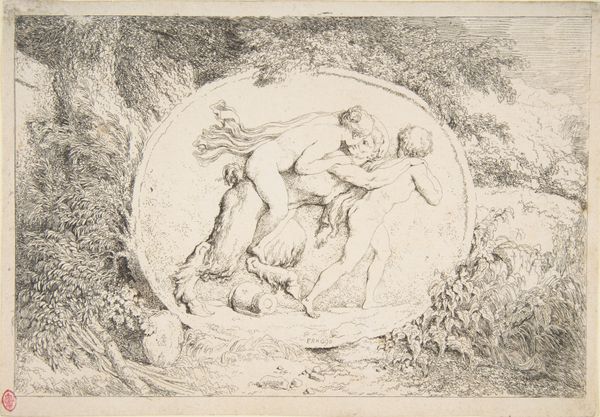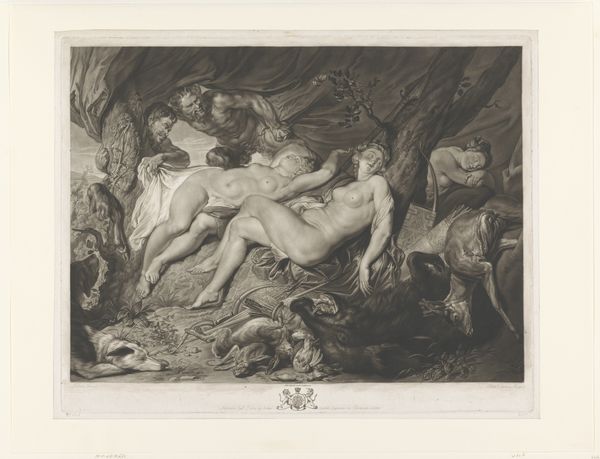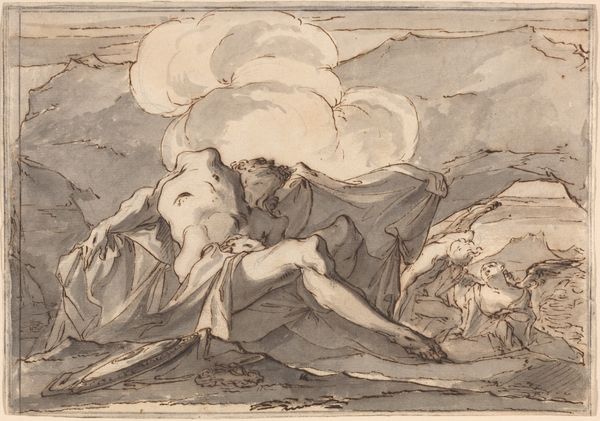
print, engraving
#
allegory
# print
#
charcoal drawing
#
figuration
#
pencil drawing
#
romanticism
#
portrait drawing
#
history-painting
#
nude
#
engraving
Dimensions: height 275 mm, width 345 mm
Copyright: Rijks Museum: Open Domain
Editor: So this engraving is titled "Liefde (Caritas)," or "Love (Charity)" in English, and was created around 1850 by Frédérique Émile Auguste O'Connell-Miethe. It depicts a woman surrounded by children in an allegorical style. I find the density of figures and shading quite striking; it evokes a powerful sense of maternal abundance, almost overwhelming in its intensity. What symbols or visual cues do you notice? Curator: Indeed. Notice how the woman’s gaze connects with only one child, offering nourishment and connection, while others clamor for her attention? Consider the broader iconography of "Caritas" throughout art history. Typically, she’s a nurturing, self-sacrificing figure. What feeling does the artist evoke by depicting her almost engulfed, on the precipice of being overcome? Is it adoration or something else? Editor: Hmm, that is an interesting point. I was mostly seeing it as purely celebratory of motherhood, but now I'm considering the artist's perspective on the *burden* of care alongside that idea. It's quite different from standard Renaissance depictions, where the Madonna maintains serenity. Curator: Precisely. The pre-Raphaelites would love that detail. The engraving style, with its intense hatching and cross-hatching, reinforces the almost claustrophobic nature of this depiction. Note, also, the deliberate ambiguity between a classical nude and what, especially for viewers at the time, may also echo ethnographic studies of non-European families. How does this contrast influence its meaning? Editor: It feels like she's suggesting something about the universality of motherhood while also perhaps hinting at certain... expectations... around female roles during that period. Thanks; now I'm seeing how the technique, combined with those iconographic choices, makes it more complex. Curator: Yes, by contrasting a classical ideal with an overwhelming, almost ethnographic portrayal, O’Connell-Miethe invites viewers to question the perceived boundaries of love, charity, and obligation during the Victorian Era. I'm glad to reveal some depth to your thoughts, it would be good if you kept at that point and maybe investigate it a bit more.
Comments
No comments
Be the first to comment and join the conversation on the ultimate creative platform.
